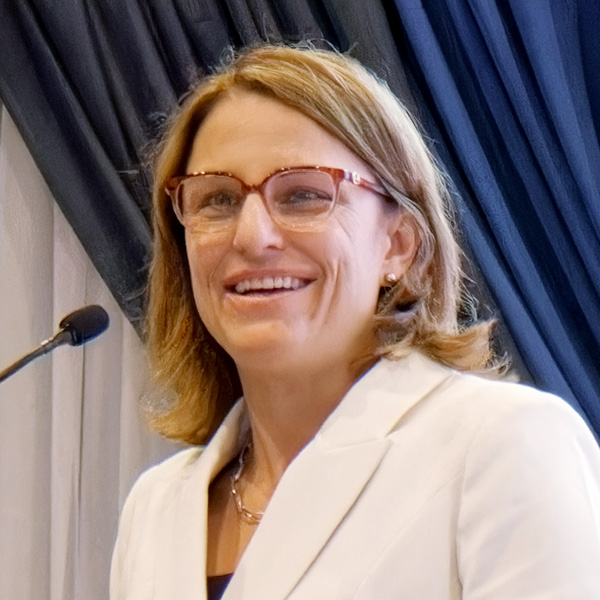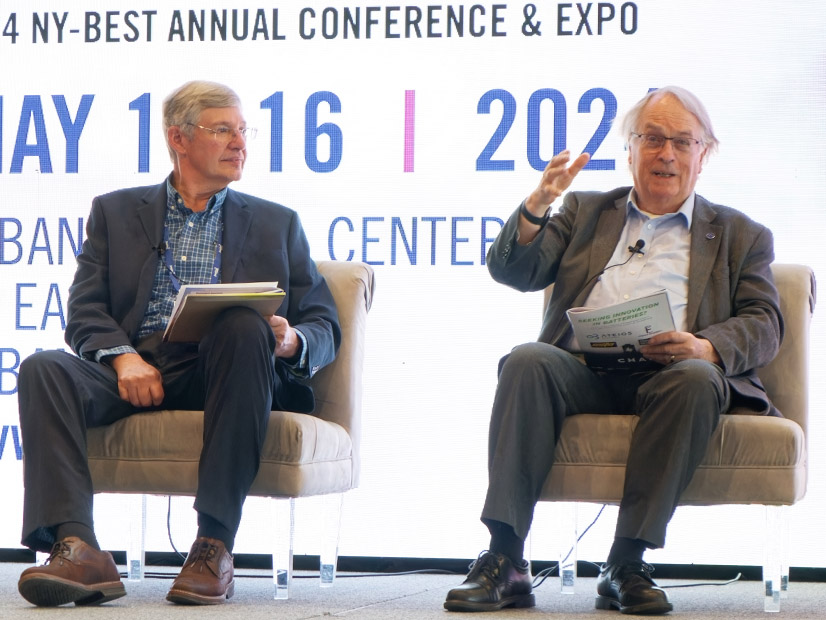President Joe Biden upped the ante in his efforts to break China’s dominance in clean energy manufacturing with a second round of announcements of tariffs, tax credits and federal funding specifically aimed at protecting and expanding the buildout of solar manufacturing in the United States.
Two days after doubling the tariffs on Chinese solar cells and panels from 25% to 50%, Biden reconfirmed on May 16 that the two-year moratorium he had allowed on cells and panels from Cambodia, Malaysia, Thailand and Vietnam will sunset June 6. He also announced that a tariff exemption for bifacial solar panels — which can generate electricity on both sides — would be terminated “imminently.” (See Biden’s New Tariffs Target China’s Dominance in Solar, EV Markets.)
Set under Section 201 of the Trade Act of 1974, tariffs on both the Southeast Asian panels and cells and bifacial panels will be 14.25% through February 2025 and then 14% through February 2026. Biden initially extended the tariffs for four years in 2022, but allowed the hold on duties for bifacial and Southeast Asian panels after heavy lobbying from the solar industry. (See Biden Waives Tariffs on Key Solar Imports for 2 Years.)
The other major component of the announcement was additional guidance from the Treasury Department, making it easier for solar developers and manufacturers to meet the requirements for the Inflation Reduction Act’s bonus tax credits for domestic content. The law provides a 10% adder to its 30% investment tax credit for solar panels or other clean energy equipment with at least 40% domestic content; however, developers and manufacturers had raised concerns about the difficulties of tracking the materials and costs in their supply chains.
The new guidelines create an “elective safe harbor that gives clean energy developers the option of relying on Department of Energy-provided default costs percentages to determine bonus eligibility,” according to a White House fact sheet. The Treasury guidelines include an “exhaustive” list of solar panel components and their default domestic content percentages, from solar cells (36.9% for ground-mounted panels with tracking) to adhesives (0.2%).
“The initial guidance lacked clarity and made some of those projects difficult to get financed,” said Mike Carr, executive director of the Solar Energy Manufacturers for America (SEMA) Coalition, an industry trade group. It required “a back-and-forth with the manufacturer on what their direct costs and various components were, and it was basically often an impossible task. Very few manufacturers were able to comply with that,” Carr said in an interview with NetZero Insider.
Biden has provided some wiggle room for developers and importers with pre-existing contracts and with cells and panels sitting in warehouses. Importers with pre-existing contracts for bifacial panels to be delivered within 90 days of the end of the exclusion will be grandfathered in duty-free during that period, as long as they’re able to certify their contracts.
Similarly, panels imported duty-free from Cambodia, Malaysia, Thailand and Vietnam will have to be installed within six months of arrival in the U.S. to prevent stockpiling, the White House fact sheet says. Customs and Border Protection “will vigorously enforce this provision, including by requiring importers to provide … certification of solar module utilization with detailed information about the modules being deployed.”
The administration also has pledged to monitor the level of imported solar cells allowed in duty-free under Section 201, officially called the tariff-rate quota. At present, the first 5% of solar cells imported into the U.S. per year are duty free, but the quota could be increased to 12.5% “if imports approach the current level, to ensure domestic module manufacturing continues to grow while manufacturers scale production throughout the supply chain,” according to the fact sheet.
According to industry analysts Wood Mackenzie, the U.S. last year imported only 3.85 GW of cells under the tariff-rate quota. But research analyst Elissa Pierce said imports could exceed the 5% limit this year as U.S. solar panel manufacturing and deployment ramp up.
The Department of Energy announced its own contribution to supply chain buildout on May 16, with $71 million for 18 projects in 10 states, which will “address gaps in the domestic solar manufacturing capacity … including equipment, silicon ingots and wafers and both silicon and thin-film solar cell manufacturing,” according to a DOE press release.
Three projects aimed at establishing new domestic supply chains for silicon ingots and cells are earmarked for $18.1 million.
Carr said that for solar manufacturers, the administration’s support for wafer and cell production is “a significant step forward,” providing market certainty to spur investment.
“That’s been the sort of a piece of the supply chain that has faced the most difficulty in getting investment … because it’s so capital intensive, and it’s so dependent on the customer demand driver of domestic content,” he said. “Whether it’s cell manufacturing or polysilicon or even module manufacturing, until we break that stranglehold that China has over that piece of the [supply] chain, we’re really going to continue to be stuck.”
Solar Tariffs: a Brief History
The Trade Act of 1974 provided for two classes of tariffs, both intended to protect U.S. companies from the unfair trade practices of foreign countries. Under Section 301 tariffs, the focus of Biden’s May 14 announcements, the government can impose trade sanctions against countries that violate U.S. trade agreements or engage in “unjustifiable” or “unreasonable” acts that burden domestic companies.
Section 201 authorizes the president to impose temporary duties or other nontariff barriers on goods imported into the U.S. that may injure or threaten to injure American companies producing the same kinds of products.
Solar wafers, cells and panels imported from China or Southeast Asian countries that use Chinese wafers and cells to produce panels have been the frequent targets of Section 201 tariffs, dating back to 2012, as outlined in a 2018 fact sheet from the U.S. International Trade Commission (ITC). Cheap, heavily subsidized Chinese panels simultaneously helped build the solar market in the U.S. while undercutting domestic supply chains, which had almost disappeared by 2017, the ITC said.
A 2017 petition from two U.S. solar companies ― Suniva and Solar World ― resulted in the Trump administration imposing Section 201 tariffs on imported solar cells and panels for four years, with a declining rate beginning at 30% in 2018 and falling 5% per year until reaching 15% in 2022.
In February of 2022, Biden extended the tariffs for another four years, with a minimal 0.25% step-down per year. Bifacial panels were excluded from the tariffs, first during the Trump administration, and then again by Biden.
The tariffs were largely ineffective at stimulating solar manufacturing in the U.S., as Chinese companies shifted production first to Taiwan and then to Southeast Asia. A new case, again brought by U.S. solar companies, resulted in a 2022 decision by the U.S. trade representative to impose tariffs on solar imports from Cambodia, Malaysia, Thailand and Vietnam.
Under heavy lobbying from the solar industry, Biden granted a two-year moratorium on those tariffs. The president framed the hold as a “bridge” intended to allow for the buildout of a U.S. solar supply chain, which has begun spurred not by tariffs but by the IRA’s tax credits.
According to DOE, since passage of the law, close to $17 billion in private investments have been announced in new or expanded solar manufacturing projects.
The two-year moratorium runs out June 6, and the May 16 announcements confirmed Biden will not extend it. At the same time, a new Section 201 investigation (Investigation 701-722) against Southeast Asian solar imports is under way, this time filed by a group of solar manufacturers now building out facilities in the U.S., some of them domestic startups and some subsidiaries of foreign-owned companies.
A hearing on the petition was held May 15, and the ITC is scheduled to submit its findings to the Commerce Department in June.
Can US Compete?
The administration’s focus on growing a healthy, competitive solar supply chain combines Biden’s drive to stimulate private investment in clean tech manufacturing and jobs, and current bipartisan concerns about Chinese trade practices, including the use of forced labor.
A domestic supply chain supporting strong solar market growth also may be critical for Biden’s goal of decarbonizing the nation’s electric grid by 2035. According to DOE’s 2021 Solar Futures Study, solar projects could generate 40% of the electric power needed to hit that target, but getting there will require deploying 30 GW of projects per year through 2025 and then 60 GW per year through 2030.
The same day as Biden’s announcement on the Section 201 tariffs, the Solar Energy Industries Association (SEIA) announced that more than 5 million residential, commercial and utility-scale solar installations were online in the U.S. SEIA predicts deployments will accelerate to 10 million by 2030 and 15 million by 2034.
According to SEIA and WoodMac’s most recent Solar Market Insight report, the U.S. installed a record 32.4 GW of solar in 2023, up a whopping 51% over 2022, putting it on track to meet the Solar Futures report targets. Deployments this year are expected to be more modest, approaching 38 GW.
But whether U.S. solar manufacturers can compete with China ― even with a federally supported and well-developed supply chain ― remains an open question, one that is at the heart of the use of tariffs to protect and expand domestic production.
China seems to have a hard lock on the global solar market. The Chinese Photovoltaic Industry Association has estimated that solar manufacturers in the People’s Republic of China (PRC) could produce up to 750 GW of modules, or panels, in 2024, along with 820 GW of solar cells and 935 GW of silicon wafers, the core component in solar cells, according to TaiyangNews, an online publication covering the Chinese solar industry.
By comparison, WoodMac has estimated that by 2027, a built-out U.S. supply chain could produce about 3.3 GW of silicon wafers, 18 GW of solar cells and 66 GW of solar panels. In other words, the domestic industry could produce enough panels to meet the deployment levels in the Solar Futures report but still would need to import wafers and cells.
“There’s very little financial incentive to manufacture machinery and upstream solar components in the U.S.” Pierce said in an email to NetZero Insider. “A module does not need to be made with a domestic wafer to qualify for the domestic content bonus adder, and imported wafers are not tariffed nearly as much as cells and modules.
“Chinese wafers are subject to the 25% Section 301 tariff, but they’re currently so cheap that the tariff is relatively insignificant. As such, we expect wafer manufacturing capacity to be much lower than domestic cell and module manufacturing capacity.”
Reflecting such market realities, solar industry trade and advocacy groups have been strategically selective in their statements of support for the May 16 announcements. SEIA has a long history of opposing tariffs on imported solar panels, and CEO Abigail Ross Hopper praised the potential increase in the tariff-rate quota of cells allowed in duty free but was silent on the reimposition of the Section 201 tariffs and the pending ITC investigation.
A statement from Ray Long, CEO of the American Council on Renewable Energy, also made no mention of the tariffs, focusing instead on the Treasury Department’s guidance on the domestic content bonus credit and its safe harbor provisions.
“Having clear rules of the road is critical for companies seeking to invest in America’s clean energy future, and [the] additional guidance on domestic content provides helpful clarity,” Long said. “Once successfully implemented, this bonus credit will help catalyze billions in private sector investment and thousands of good-paying jobs by boosting clean energy deployment and increasing the competitiveness of American-made products. “
What Developers are Saying
How the tariffs affect solar projects in the development pipeline likely will vary among installers. Generally, with the 90-day off-ramp for developers with existing contracts for bifacial panels and the six-month limit on stockpiling, little impact is expected for the rest of 2024.
Looking beyond the near term, Reagan Farr, CEO of Silicon Ranch, a commercial installer based in Tennessee, said he doesn’t expect the tariffs to affect his company’s bottom line because it already has a strong U.S.-based supply chain and long-term agreements with manufacturers to ensure it doesn’t need to stockpile.
“We [pay] a bit of a premium for domestic content,” Farr said. “I felt like minimizing logistics risk and having the economic development narrative tied to that equipment was worth the premium.”
Still, Farr calls the return of the Section 201 tariffs “a no-brainer move by the White House” to protect the private investment in solar manufacturing triggered by the IRA’s tax credits.
“We’re asking companies to make $100 million, up to $1 billion-type investments [to] onshore manufacturing capacity in the U.S.,” Farr said. “And if we don’t have smart policies like that, you’re never going to get companies to trust you again. So I think this was almost a necessity.”
Jeff Weiss, executive chairman of Distributed Sun, a Washington, D.C.-based developer, argues the administration needs to do more to draw foreign companies to build or expand their factories in the U.S. Building out domestic supply chains will take time, and incentives beyond the IRA may be needed, he said.
Looking at the domestic content bonus credits, Weiss said, “They should have the widest aperture in defining the 40% [requirement] in order to encourage more people, more companies to invest in American manufacturing. The narrower that definition, the more difficult it is to comply.”
Ava Duane, a sales operation analyst at New Columbia Solar, a commercial solar developer in Washington, D.C., said her company started diversifying its supply chains about six to eight months ago, largely in response to the IRA’s bonus tax credits for domestic content.
“The tariffs that were announced [May 16] are not super shocking,” Duane said. “I think a lot of folks have seen this coming and … have been moving to diversify their supply chains to take advantage of the other things that the White House has done to make domestic content more feasible from a price standpoint.
“We actually get a lot of customers who ask about domestic content and [we have] … been able to enter into agreements with suppliers where we can reach a certain threshold of American-made components on our systems and so on. It’s actually been kind of customer-driven as well.
”Prices for solar panels likely will rise, which “will affect the amount of capacity that we’re able to deploy … and that being said, this also just affects all sorts of customers,” Duane said. “How many folks are going to think about putting solar on their home because the modules will be more expensive, at least in the medium-term future? I do expect there to be a bit of market turbulence, and there probably will be a slowdown.”
Duane said she expects the IRA tax credits will at least blunt some of the impacts of price increases, but that “it’s really just a question of how quickly the supply chains can ramp.”






